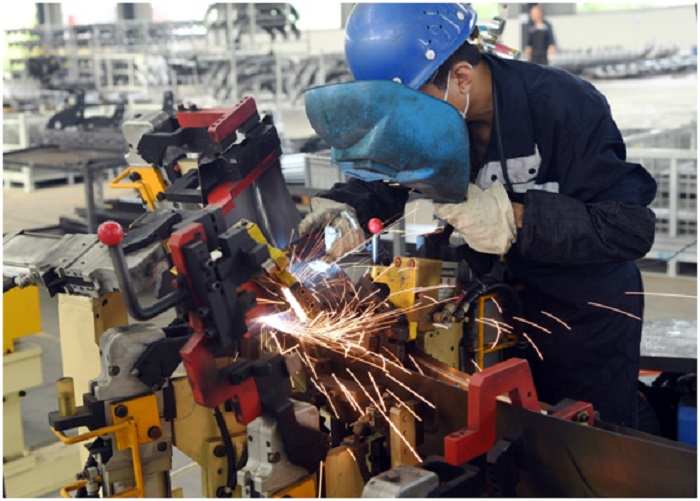



China’s employment pressure has been relieved as the country strives to advance work resumption, with the demand side slightly larger than the supply side on the job market.
In the second quarter of this year, over 4.4 million jobs were created in China, down 795,000 from the January-March period. The number of job seekers in Q2 stood at over 3.3 million, up 91,000 from that in Q1.
According to information released by public employment service organizations in 83 Chinese cities, the demand side went down by 15.6 percent and the supply side grew by 2.9 percent in the second quarter when compared with Q1 figures.
Ding Dajian, a research fellow with the China Institute for Employment Research, attributed the decreasing demand to the impacts from COVID-19 which plunged global economy into a recession and posed huge pressure on foreign trade enterprises. He explained that the slight rise in the supply side was caused by the initial achievements of China epidemic containment efforts.
“The fall and rise in the demand and supply sides have alleviated the pressure of the job market, leading to a large drop in the opening-to-application ratio,” Ding said.
“The largest challenge we faced after production resumed was the dearth of laborers, as we rushed to deliver orders but were unable to recruit enough employees,” said Cai Jinshun, an executive of Chinese leading toy manufacturer Alpha Group Co., Ltd. According to him, the enterprise spent most of its time on recruitment in the first quarter, and the human resource was generally stabilized in Q2.
Despite the sharp decline of the opening-to-application ratio, the demand side is slightly larger than the supply side on the job market. Thanks to the steady progress of the Chinese economy, the opening-to-application ratio has been kept above 1.2 since the fourth quarter of 2017, and the number is still rising in general.
A recent report issued by China’s Ministry of Human Resources and Social Security (MOHRSS) revealed the trend on the Chinese job market.
According to the report, manufacturing, wholesale, retailing, consumer-oriented service, hospitality, information service & software, logistics & mail industries were the major sectors demanding employees. Sales people, packers, waiters & waitresses, and couriers were the most wanted jobs, said a list in the report ranking job supplies and demands in 10 major Chinese cities.
The health, social security and social welfare sector’s demand for employees rose 184.9 percent from Q1, while the logistics & mail, as well as the education industries saw growths of 8.7 percent and 7.4 percent, respectively.
More and more people have joined the tertiary industry in China over the recent years. As of the end of 2019, 47.4 percent of China’s workforce were in the service sector. As work and production resumption continues its steps, the job demand in the service sector, in particular the logistics & mail industry, is bouncing back. Couriers ranked the second most wanted job for two consecutive quarters, and the opening-to-application ratio even reached 10:1 in Chongqing, Xi’an and Zhengzhou.
“During the COVID-19 epidemic, many sectors have launched online services, which gradually released the pent-up consumption demand. It further facilitated the development of the logistics industry and drove up the demand for relevant jobs,” said Wang Yuehan, an associate research fellow with the Development and Research Center of the State Post Bureau.
Entertainment, sports and recreation industries witnessed a large rise in job demand. “Driven by the prospering live-stream sector, the job demand in the entertainment, sports and recreation industries rose 117.82 percent from that in Q1, and the figure was way larger than the growth of applications,” Li Qiang, executive vice president of Zhaopin.com, an Chinese online recruitment platform, told People’s Daily, adding that these industries would become great choices for fresh college graduates. Statistics indicated that in the second quarter, the demand for fresh college graduates in the entertainment, sports and recreation industries rose 349 percent year-on-year, and 300 percent from Q1.
According to Li, there would be a huge gap of 4.17 million professionals in the core technologies of the new infrastructure industry by the end of this year.


The Executive and members of the.


The Acting Director, FCT Directorate of.


President Bola Ahmed Tinubu has been.



Barely a month after resignation of.


An Abuja based Legal Practitioner, Osuagwu.



Convener of Equitable Remedy, Mrs. Magaret.


Contractors handling the contract for city.


Nigerian government may have concluded plans.


The Diplomatic Correspondents Association of Nigeria.


A rights group, “Follow Me Talk.
Leave a Comment